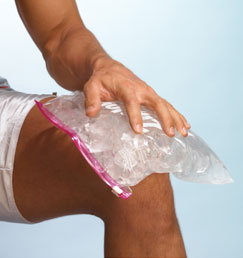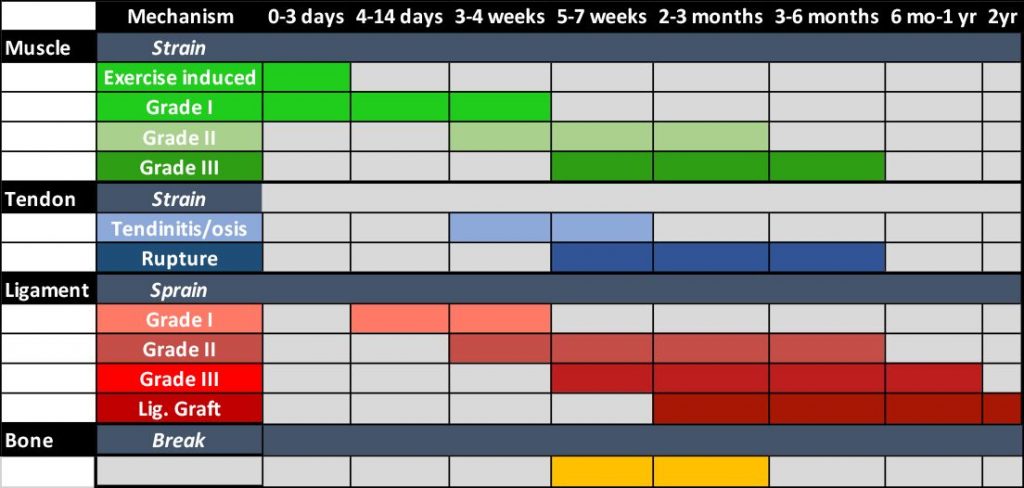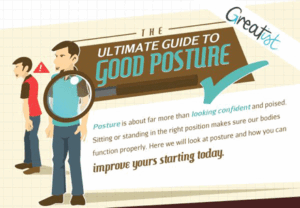On the Mend
 On the Mend
On the Mend
As we quickly approach the holy grail of running events, the Boston Marathon, we start to see a rise in our battered and beaten road warriors. Overuse conditions from months of increased training, acute injuries from falls on slippery roads and chronic aches and pains, all result in the patient surrendering to the need for assistance.
As much as we are empathetic and desperately want our marathoners, as well as all of our patients to mend as quickly as possible, it is just not that simple. A common statement my patients will hear from me is; “these are hands, not magic wands.”
There is no magic bullet to expedite the healing process, only ways to avoid slowing down or interrupting the natural process. Just like Rome, the human body wasn't built in a day and it certainly doesn't repair itself in that time frame. The body's response to damage is complex. It depends on the extent of damage, the type of tissue, your age, your health and many more factors you cannot control. The process of tissue healing is similar in all tissues, but they don’t all heal the same way. This is due to factors such as blood supply to the area, function of the tissue and our ability to protect the tissue in response to an injury.
When you consider these variables in the healing process, you can begin to ‘estimate’ the appropriate healing time for your injury. As much as we know you don’t want to hear that ‘you should not run’ or ‘you need to stay off it’ in order to allow for proper healing, it will never change the reality that tissues repair based upon our ability to allow the process to occur.
Consider the act of biting you lip. If you want that lip to heal, how often do you think you can continue to bite it as it’s trying to mend? The same logic is applicable to an injury. If you have a ‘Grade I’ knee sprain, the estimated healing process is anywhere from 3 days to 4 weeks. What amount of continued running & jumping would be appropriate? The chart below is a good guide for you to better understand the tissue repair process. As you will see, there are wide ranges of recovery times. These are NOT solely based upon the injury but include the factors we mentioned above. Massage, as an instrument in your recovery, can help to facilitate what your body is already trying to do naturally. However, it can be even more helpful by communicating to the brain through graded exposure to touch and movement, providing a message of safety, hence down grading the pain you may experience.
Factors that Impact Tissue Repair
- Severity of injury
- Loading: Too much or too little will impact the process. Always know the proper amount.
- Movement: Repetitive movement patterns and altered movement can stress injured tissues
- Hydration: Dehydrated tissues heal slower
- Inflammation: Systemic inflammation due to stress, poor nutrition, lack of sleep and other risk factors can impede healing
- Sleep: This is essential for tissue/cellular repair and inflammation control
- Cardiovascular Health: Need good circulation
BUT the pain is gone! Isn’t it healed?
- The absence of pain IS NOT a good indicator for healing or tissue remodeling
- Pain can usually be controlled with manual therapy and altered movements and loading patterns
- The injury still needs time to remodel. It will be at risk of reinjury or recurrence until complete remodeling has occurred
What’s the Grade mean for Sprains or Strains?
- Grade 1 (mild):Only some of the fibers in the ligament, tendon or muscle are torn, and the injured site is moderately painful and swollen. Function in the joint will be unaffected for the most part.
- Grade 2 (moderate):Many of the ligament, tendon or muscle fibers are torn, and pain and swelling is moderate. The functionality of the joint is compromised.
- Grade 3 (severe):The soft tissue is completely torn, and functionality and strength on the joint is completely compromised. In most cases, surgery is needed to repair the damage.

Ready to #feelbetter?
You're just a click away from a wicked good massage!
-

60 Minute Massage Gift Card
$170.00 Add to cart -

90 Minute Massage Gift Card
$255.00 Add to cart -

Mini Aer Small Room Air Purifier
$149.00 Add to cart -
Sale!

Thera-Pearl Sports Pack/Hot Cold
Original price was: $14.99.$12.99Current price is: $12.99. Add to cart -

3 Somadome Sessions Gift Card
$135.00 Add to cart -

TheraBand CLX Connective Loop
$14.99 Select options -

6 Somadome Sessions Gift Card
$270.00 Add to cart -
Sale!

Biofreeze
Original price was: $14.99.$12.99Current price is: $12.99. Add to cart
Passion Mountain
I was at an event recently and was asked by somebody how I could STILL be so passionate for what I do. He said, “What I mean is that you talk about what you do with the passion of child flipping through a new pack of baseball cards. I wish I was that passionate about…
Read MoreFish You Should Scale Back On
New Englander’s love their seafood and we deepen our love affair every summer when our favorite crustaceans, ‘lobstah’ is a plentiful. But what is the best seafood for us and what are the ones that we should be staying away from regardless of how yummy they may be? Monterey Bay Aquarium has combined data from…
Read MoreSports are a Great Metaphor
It’s no secret that my life has always revolved around athletics. From my early days playing pop warner football, through my college years of lacrosse and on into the various community leagues since, being part of a team has always been where I feel most comfortable. What I enjoy most about being part of a…
Read MoreWhat is an Expert?
“An expert is someone widely recognized as a reliable source of technique or skill whose faculty for judging or deciding rightly, justly, or wisely is accorded authority and status by their peers or the public in a specific well-distinguished domain.” – Wikipedia This past month I flew to Atlanta to present a few classes in…
Read MoreThe Power of a Hug
Originally Posted 5/1/2014; following the 1 year anniversary of the Boston Marathon Bombings and our mission to rebound after these horrible attacks on our city. We helped orchestrate the ‘One Run for Boston’; a 3328.2 NON-STOP running relay from LA to Boston, raising over $500K for the victims and survivors of the events of 4/20/2013.…
Read MoreTips from the Table
Without fail, every marathon season, I am asked by my patients, what kind of advice I would offer up to them as they prepare to run the Boston marathon. I first admit that I have never (nor will ever) run a marathon, but given my unique insight of spending 1000’s of hours alone in a…
Read MoreShoulder Impingement
The glenohumeral joint is a highly complex articulation. It has the greatest range of motion of any joint in the body. However, its increased motion occurs at the expense of stability, requiring the soft tissues to play a more critical role in maintaining joint integrity. As a result of increased mechanical demands, numerous soft-tissue injuries…
Read MoreTrain, train, train. Train of fools.
In my seventeen years as a massage therapist, I am still amazed by some of the things I see in my office. Being situated 1/10th of a mile from the finish line of one of the most prestigious marathons in the world, the Boston Marathon, we see more than our fair share of runners coming…
Read MoreAchilles Tendon Disorder
Achilles Tendon Disorder Massage therapists see many clients with active lifestyles. Running, jumping, dancing, climbing, or any number of other activities can put serious stress on the Achilles tendon (AT). AT disorders also can contribute to biomechanical disorders in the foot and lower extremity. That is why it is important for the massage practitioner to…
Read More


